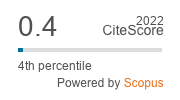Effect of the chemosterilants Apholate and Metepa on the ovaries of the Red cotton bug, Dysdercus Cingulatus Fabr. (Insecta, Heteroptera, Pyrrhocoridae)
DOI:
https://doi.org/10.33307/entomon.v1i1.1118Abstract
Studies on the histology and histochemistry of the ovaries in normal Dysdercus cingulatus and effects of the chemosterilants apholate and metepa on the ovaries of this animal are presented. Single injection of 10µg metepa or 5µg apholate per newly moulted adult female does not apparently interfere with oocyte growth or vitellogenesis. But the eggs laid after both these treatments do not hatch. Oocyte development is however inhibited after treatment of newly moulted adult females with 12.5µg metepa or 7.5µg apholate. Histological and histochemical studies of the ovary after this treatment indicate disintegration of germarium and follicular epithelium as well as reduction in size of oocytes and their resorption. Prefollicular tissue almost completely disappears and multiple oocytes are present in follicles after treatment with apholate. Histochemical studies reveal no yolk granules of protein, carbohydrate, or lipid after treatment with both the sterilants. Treatment with apholate by contact method at 0 .22 mg/ sq cm of surface of contact, inhibits oocyte growth after ptevitellogenesis, ultimately resulting in irreversible atrophy of the ovarian tubes.
Downloads
Published
How to Cite
Issue
Section
License
Copyright (c) 2024 Association for Advancement of Entomology

This work is licensed under a Creative Commons Attribution-ShareAlike 4.0 International License.


